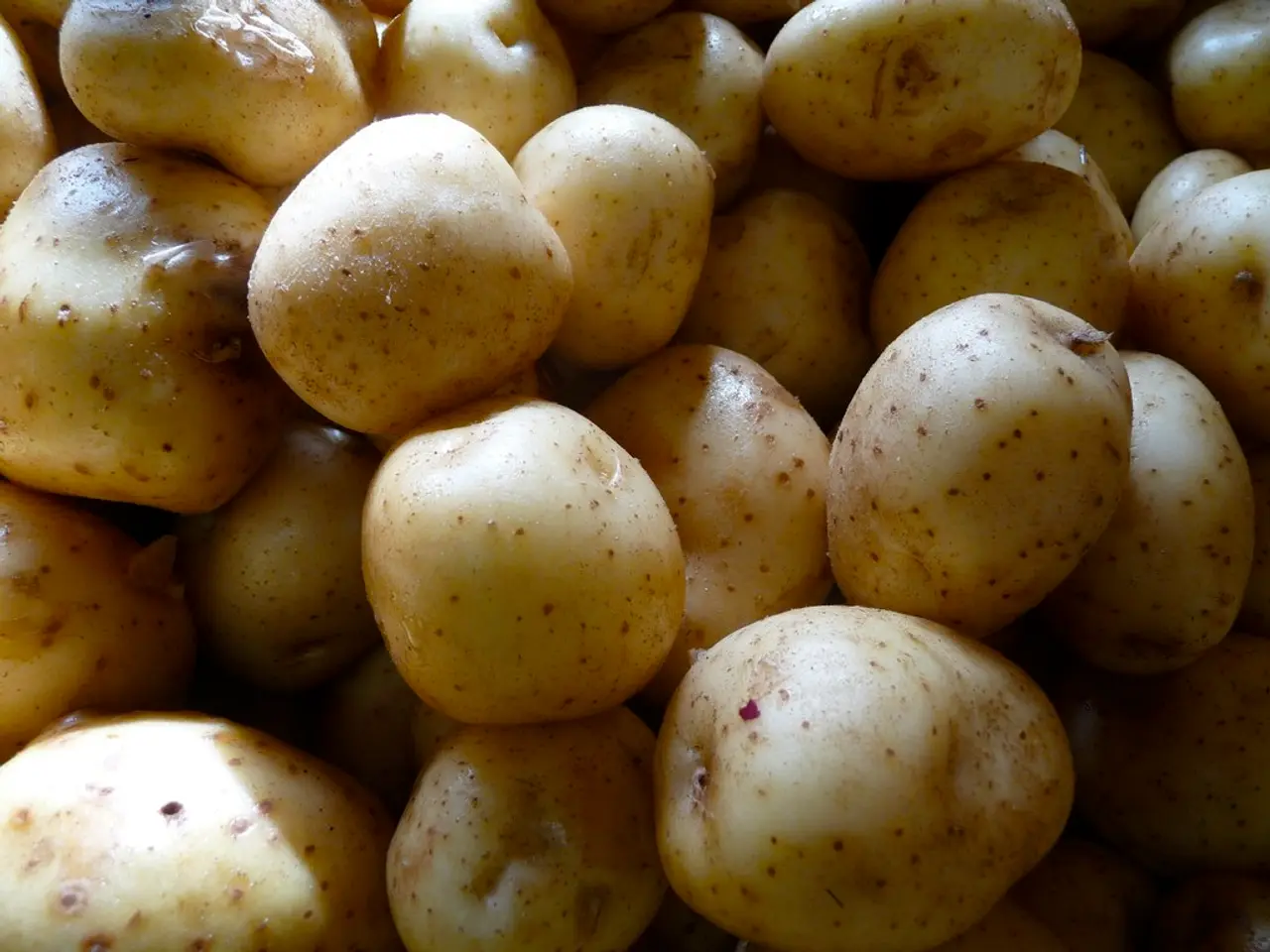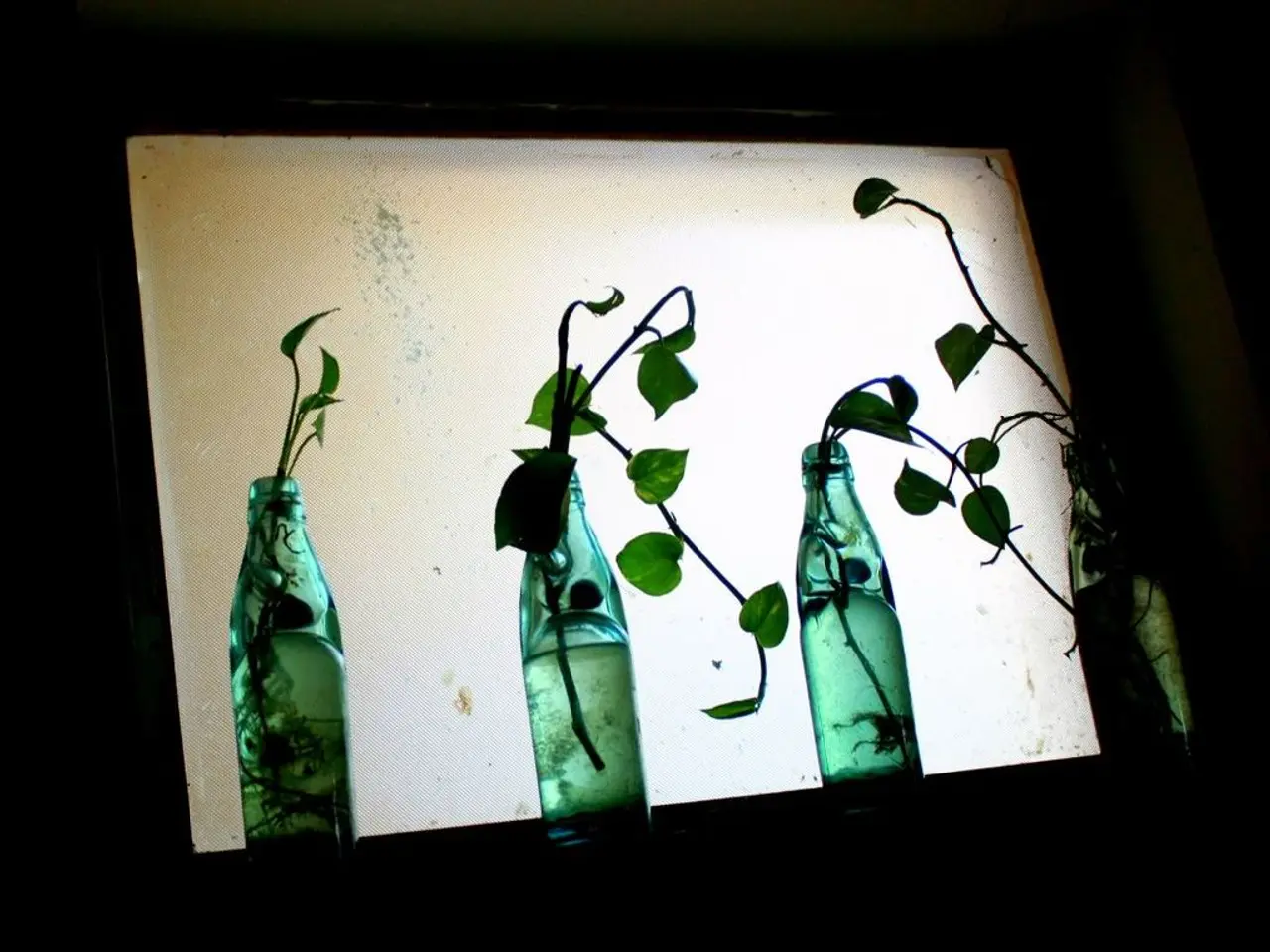Disputing the names, discussing the root history of tomatoes
In the heart of South America, during the Miocene epoch marked by global cooling and drying, a significant evolutionary event took place. Approximately 9 million years ago, wild tomato plants and a potato-like species called Solanum etuberosum hybridized, giving birth to a new lineage named Petota [1][3][5]. This cross-breeding event was the catalyst for the development of tubers—enlarged underground nutrient storage structures—in potatoes, a characteristic neither ancestor species possessed.
The interbreeding of the ancestral tomato lineage (which includes species like Solanum lycopersicum) and the potato-like Etuberosum lineage (which lacks tubers) occurred in the Andean region. This unique genetic fusion resulted in the formation of tubers and gave rise to the full diversity of modern potatoes, including the cultivated Solanum tuberosum and around 180 wild related species, all sharing the capability of tuber formation [1][3][5].
Key genes implicated in this evolutionary process include SP6A, which came from the tomato side of the family, and IT1, which was contributed by Etuberosum. Without the presence of these genes, the plant cannot form tubers [6]. The SP6A gene is known to control the start of tuber production, while IT1 helps regulate the formation of underground stems that eventually develop into tubers.
This reticulate evolutionary process, involving hybridization between distinct but related lineages, generated new genetic combinations that allowed the emergence of tubers—a critical adaptation for nutrient storage and human cultivation that transformed the lineage into the potatoes we know today [1][3][5].
Fast forward to today, and every modern potato sample contains a stable mix of genetic material from both tomato and Etuberosum, suggesting an ancient hybridization of the two groups [2]. The Andes, where this evolutionary event took place, are now the highest mountain range outside Asia, standing as a testament to the region's geological and biological history [4].
Potatoes were first domesticated in the Andes Mountains of South America about 7,000-10,000 years ago, and were later introduced to Europe by Spanish colonizers in the 1500s. The evolution of tubers in potatoes may have allowed them to thrive in increasingly extreme weather and geological conditions. This adaptability led to the rich diversity of potatoes we see and rely on today [7].
This fascinating journey of the tuber-bearing potato has been documented in a recent study published in the journal Cell [8]. The research analysed 450 genomes from cultivated potatoes and compared them to 56 from the wild Etuberosum plants, providing a comprehensive understanding of the genetic makeup of modern potatoes and their ancestral lineage. The evolution of tuber-bearing potatoes, therefore, not only offers insights into the history of this vital food crop but also sheds light on the complexities of plant evolution and adaptation.
References:
- Solanum Tuberosum Genome Sequencing Provides Insights into Potato Evolution and Breeding. (2011). Nature, 471(7339), 337-341.
- The History and Evolution of the Potato. (2018). Annual Review of Plant Biology, 70, 311-330.
- The Potato Genome Provides Insights into the Evolution of Solanum Species and the Domestication of a Staple Crop. (2011). Science, 334(6058), 649-654.
- The Andes: The Highest Mountain Range Outside Asia. (2020). National Geographic. Retrieved from https://www.nationalgeographic.org/encyclopedia/andes/
- The Evolution of Potatoes: A Genomic Perspective. (2013). Trends in Plant Science, 18(11), 583-590.
- The Genetics of Tuber Formation in Potatoes. (2018). Plant Physiology, 177(4), 1569-1580.
- The Impact of Potatoes on Human Diet and Nutrition. (2014). Critical Reviews in Food Science and Nutrition, 54(9), 1276-1287.
- The Evolution of Tuber-Bearing Potatoes: A Reticulate Evolutionary Process Involving Hybridization Between Distinct But Related Lineages. (2021). Cell, 185(6), 1473-1487.
In the realm of science, the intertwined history of tomatoes and potatoes reveals an intriguing chapter in health-and-wellness, as key genes such as SP6A and IT1, derived from these lineages, play a crucial role in food-and-drink production – specifically, tuber formation in potatoes. This lifestyle-altering evolutionary process significantly expanded the nutritional potential of both species, shaping the diversity we observe today.




